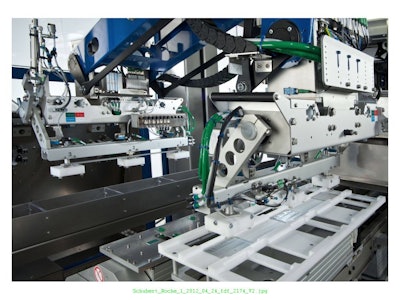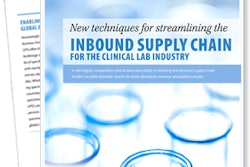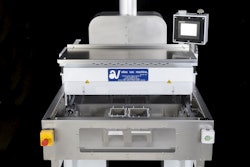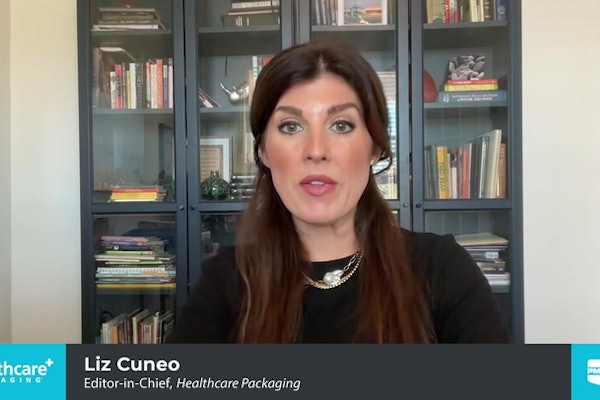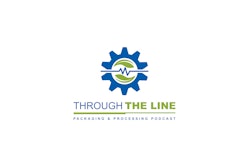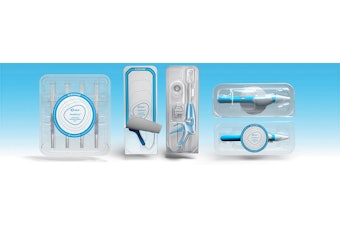"For 10 years, we have had a vision of packaging the patient kits for our clinical studies using an automated process. This dream is now being fulfilled," declares Christoph Mettler, head of Clinical Packaging and Labeling at Hoffmann-La Roche AG in Switzerland. A TLM (top loading machine) packaging line from Schubert allots medication and placebos to individual patients and groups predetermined quantities of them together into multipacks to form a personalized patient kit.
A single packaging error can nullify the results of an extensive clinical study. But the manual labor involved in creating patient kits is a thorn in the side of pharmaceutical manufacturers. For manufacturers, it is worthwhile to invest in a packaging line even when assembling as few as 100 to 300 patient kits. The reason? People make mistakes, something even the best quality routines cannot always prevent.
To automate the packaging process, however, the line must be able to master the challenge of the single-unit batch. A specific number of products (active agent or placebo) are to be personalized for each patient with his or her respective information and then packed into a box, which is also personalized. The data management required in this process goes beyond "track and trace.” It is not enough to keep track of which package contains a certain product. A control process determines which product is to be packed into which box.
As a result, it must also be possible, using individual data, to produce products and boxes again if they have been rejected for non-conformity. All the required steps of the process are repeated, from retrieving a product or box to personalizing (marking) them and assigning a patient's products to his or her box.
Patient data is stored in an Excel list. The successful processing of a patient kit is registered with a time stamp in the data record of the patient. Information on rejected products and packages is entered in the batch log.
Meets flexibility demands
TLM technology from Schubert meets the requirement for maximum flexibility because it combines simple mechanics and intelligent software consistently. All the components of TLM technology follow this principle. The latest example is the TLM Transmodule. This rail-based transport robot makes it possible to simultaneously fill four boxes, erect two more, and close another. A Transmodule can move intermittently on one section of the path (coordinated with the filling process) and then switch to traveling continuously (coordinated with the pick-and-place process).
Each Transmodule has an ID code that makes it easier to organize processes on the single-unit batch level. For example, the individual patient blister is placed on a certain Transmodule located in a precisely determined position.
The TLM technology's flexibility allowed configuring Roche's line using standard components. The VMS controller, robotics, vision system, electronics, electrical system, and mechanical parts all are from Schubert.
According to Urs Vögtli, Hoffman LaRoche procurement manager for Equipment, Eng. Proc. Region Basel & EU/RoW, this was a key reason for guiding Hoffman LaRoche’s investment decision: "The line does something special, even though it isn't a customized product. This is consistent with our safety culture as a pharmaceutical manufacturer."
Seven sub-machines for blisters
The entire line is comprised of seven sub-machines. It is currently set up for blisters of various sizes. There are a number of different box sizes. A rotary table for stable products is already provided. This expansion enables the production of multi-component packs.
The line-management system receives an Excel file with the patient data via a USB interface. In addition to the patient data, the lot order also contains the production data (e.g., layout variants of the patient kit). When the order is started, line components like the vision system receive all the data they require.
The line integrates multiple camera systems to monitor the readability, completeness, and proper placement of labels on blisters and boxes as well as an array of sensors, which check to ensure that boxes are closed properly. If the system reports an error, the respective part that would have been included in a patient kit (such as a label, blister, box, etc.) is rejected.
Single-unit batches make it more challenging than normal to organize repeated production. In order to enable the individualized assignment of blisters/boxes, mixing up the sequences involved must be prevented. For this reason, the solution for Roche involves the line controller initiating an interruption.
The following is an example using blisters. Properly labeled blisters are transported and packed into the respective boxes. Once all the blisters of a patient kit leave the filling area, the missing blister is produced again. The same goes for the box. Positively checked, and already filled, patient kits can be placed on a buffer table until the box that’s been produced and filled again is discharged.
Two requirements must be met in order for this process organization and the associated data management to function. First, the blisters of a patient are not retrieved (produced) until his or her positively checked box reaches the loading station. Second, the number of patient kits produced simultaneously is limited (to two patients, at present). By necessity, this puts limitations on speed. The line can process 55 blisters/min. This meets the needs of Roche, which demands absolute control security. The output rate is of secondary importance.
The line process
The blisters are fed via magazines. There is one magazine for the medication and one for the placebo. The three blisters are placed on a Transmodule. A UV camera confirms that the product is the correct one (active agent or placebo).
The data for identification of blisters (patient, active agent, production, and expiration dates, lot number, code, etc.) are first printed on a label in the middle line part, and then the label is applied. Camera systems check the readability, completeness, and proper placement of the label.
The Transmodule with the blisters moves to the loading station. Two cartons stand ready on another Transmodule rail system. These cartons have been erected (crash-lock bottom or flat blank) and labeled. Camera systems have checked the identifying markings. Cartons of the two-row format use a partition.
When both patient kits are completely filled, they are closed. In the same section of the line, the outer carton is erected from the flat blank, glued, and brought into the last sub-machine by a vacuum conveyor for filling. At this point, a TLM-F2 robot places a piece of paperboard inside the carton the bottom, picks up patient kits, and places them in the carton. The filling process is completed with the placement of a piece of paperboard on the patient kit in the carton. The original line version was expanded to include labeling and closing of the cartons.
All of the processes take place in an extremely compact line, from the individual blisters to the finished package containing the individual patient kits ready for shipment. The space-saving, close-coupled design is advantageous for the pharmaceutical manufacturer because there are no transfer sections between the individual machines. These validation "problem zones" are eliminated and control effort is reduced.
Carsten Peters' Schubert team, supported by Swiss representative NST Diener GmbH, note that the configuration of the packaging line was "easy,” with the data management presenting the primary challenge. Not visible to the operator during day-to-day work, as he or she communicates with the line using convenient operating software, the complexity of this aspect is hidden from view and considered the perfect solution for the iPad generation.
In the future, this line could just as easily package individual medicines. Instead of uniform blisters, a blister with an identifying code would be fed through, which would then be read.
